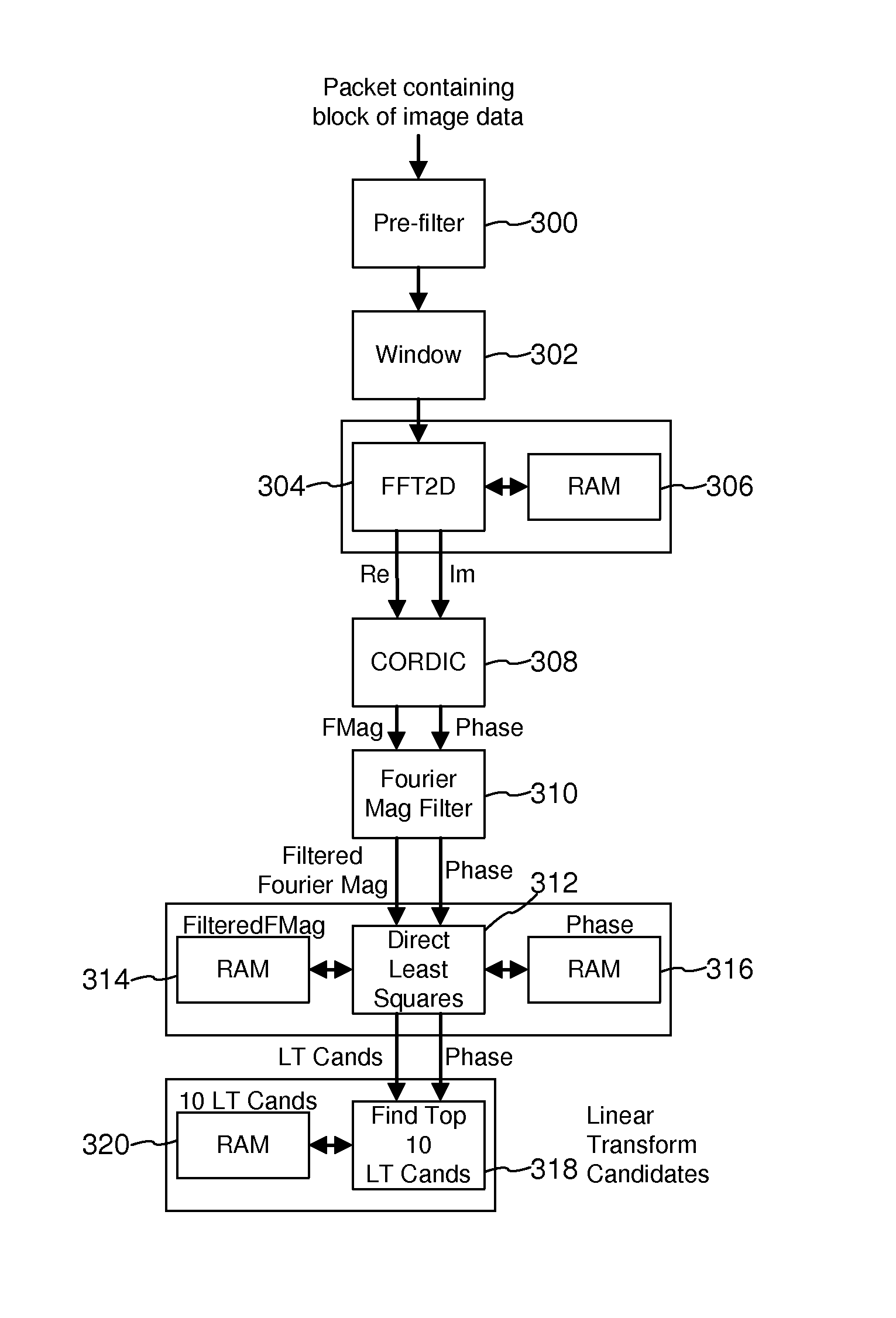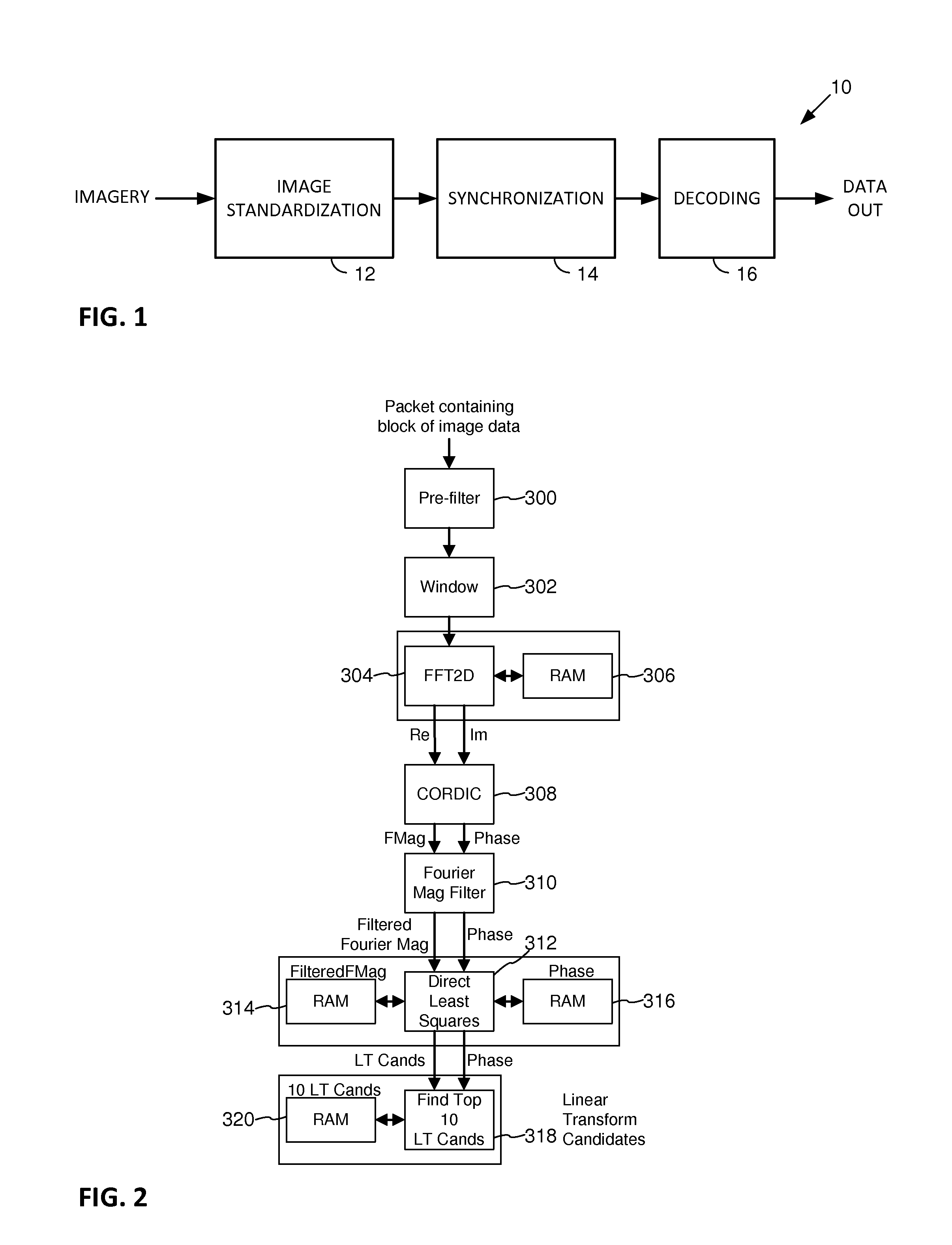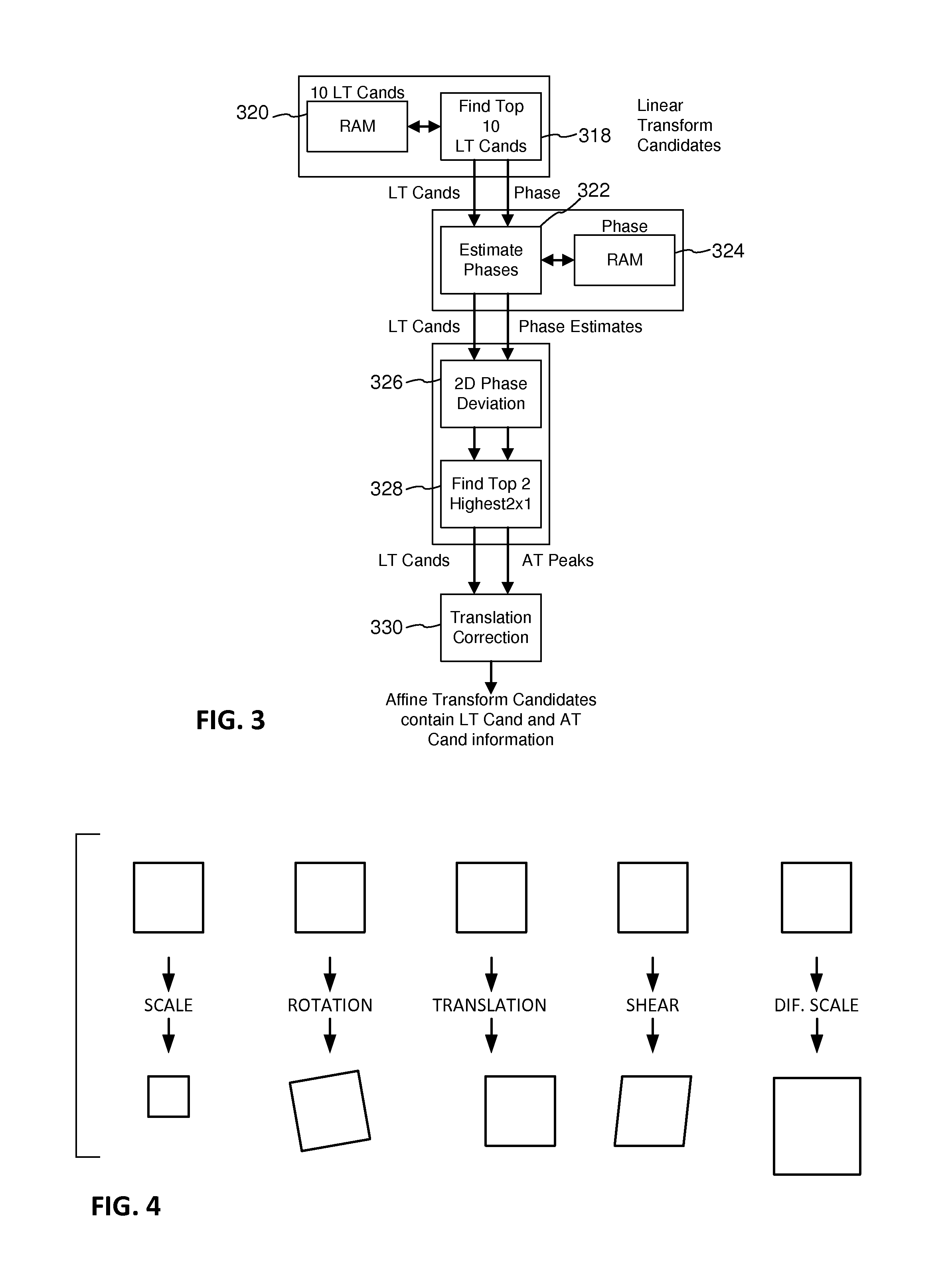Hardware-adaptable watermark systems
a watermark system and adaptable technology, applied in the field of hardware adaptable watermark systems, can solve the problems of uncertainty regarding the intensity and spectrum of lighting that illuminates the package, the scale, rotation or position of watermark blocks in captured imagery, and the increase of the variability of the focal distan
- Summary
- Abstract
- Description
- Claims
- Application Information
AI Technical Summary
Benefits of technology
Problems solved by technology
Method used
Image
Examples
Embodiment Construction
[0028]Applicant details, below, several different forms by which watermark systems can be made reconfigurable in hardware.
[0029]FIG. 5 shows a first such hardware system 50. This arrangement includes the image standardization, synchronization, and decoding stages of FIG. 1, but depicted in greater detail. Each such stage is implemented as a pipelined series of modules, each of which performs a different part of the overall process.
[0030]Some or all of these modules are implemented in ASIC form, e.g., using known techniques as detailed below. But, importantly, at least one or more of the modules includes one or more registers into which parameter(s) that tailor some aspect of the module's operation are stored. If the hardware system 50 is employed in a retail, fixed POS scanner, one set of parameters can be employed. If employed in a handheld scanner, another set of parameters can be employed. If employed in a consumer smartphone, still another set of parameters can be employed. If e...
PUM
 Login to View More
Login to View More Abstract
Description
Claims
Application Information
 Login to View More
Login to View More - R&D
- Intellectual Property
- Life Sciences
- Materials
- Tech Scout
- Unparalleled Data Quality
- Higher Quality Content
- 60% Fewer Hallucinations
Browse by: Latest US Patents, China's latest patents, Technical Efficacy Thesaurus, Application Domain, Technology Topic, Popular Technical Reports.
© 2025 PatSnap. All rights reserved.Legal|Privacy policy|Modern Slavery Act Transparency Statement|Sitemap|About US| Contact US: help@patsnap.com



